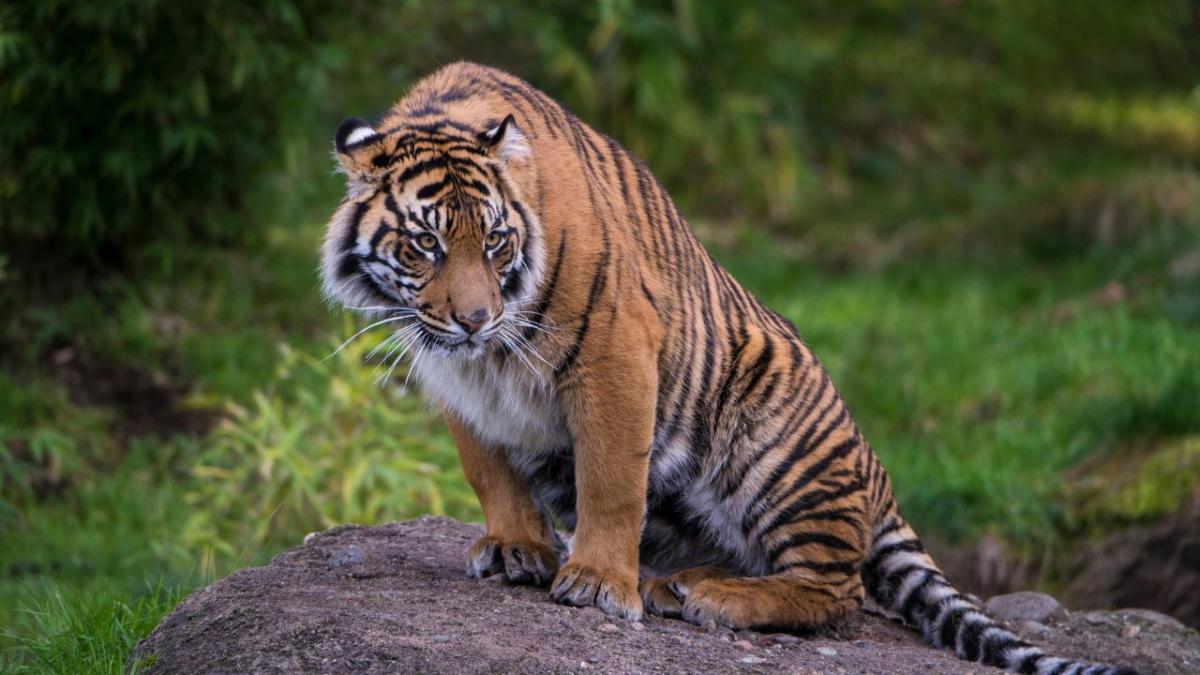
It’s International Tiger Day and to celebrate, here’s some good news: the tiger population has steadily increased in the last five years because conservation efforts fkn work. But that made me wonder: how long can we justify having tigers in enclosures if they’re stabilising in the wild? We asked a tiger keeper about the ethics of keeping these kitties in captivity.
To mark the occasion, Taronga Zoo invited me along to check out their Sumatran tigers. They actually have six: mama Kartika, dad Clarence and their three-year-old cubs Mawar, Tengah Malam and Pemanah, plus Kartika’s brother Kembali.
If you’re like me, you might assume tigers are bred to be released — but this little family will never see the wild.
“[Our cats] are a genetic back-up for the animals in the wild,” Taronga Zoo tiger keeper Deb Price told PEDESTRIAN.TV.
There are only about 350 to 400 Sumatran tigers left — meaning Taronga’s kitties make up more than 1 per cent of the entire population. But despite these numbers, populations are slowly increasing. Sumatran tigers specifically are beginning to stabilise in their numbers, even though those numbers are low. They still have a long way to go, but allow yourself some cautious optimism.
According to the International Union for Conservation of Nature’s (IUCN) Red List of Threatened Species Assessment, tiger populations across the world have grown from 3,200 in 2015 to 4,500 in 2022 — a jump of 40 per cent!
#NewsAlert: In a tremendous turning point for a species on the brink of extinction, the International Union for Conservation of Nature (@IUCN) has just announced that global #tiger numbers have stabilized and are potentially increasing. pic.twitter.com/qn0NpH20yP
— Panthera (@PantheraCats) July 21, 2022
The huge increase is partially because it’s easier to count the animals now, but according to conservation organisation Panthera we can also thank an increase in protected lands.
All this good news raised a bunch of ethical questions for me when I watched Taronga Zoo’s tigers frolic happily in their enclosure. I don’t love the captivity of animals pretty much ever, so zoos make me sad. But I’ve justified tiger enclosures because of their endangered status. We gotta breed and release, right?
Except Taronga Zoo’s Sumatran tigers are not bred to be rewilded. They will never be released. They know and like their humans too much, and they don’t have the survival skills. So what is the point of breeding and exhibiting them?
“For us, there’s no point in going to the release stage because the area is still unsafe,” Price said.
“The same threats exist, which is why they’re in this predicament already.
“It wouldn’t be fair for us to release animals into an area where those threats are still there.”
So instead, Price said Taronga Zoo participates in breeding programs to maintain genetic diversity for tigers should they become extinct or their numbers drop catastrophically low. They’re essentially a back-up plan.
@pedestriantv There are only 400 Sumatran tigers left in the wild, but conservation efforts are working to save them. ❤️🐯 #ptv #adayinthelife #internationaltigerday #tiger
While this makes sense to me, I still felt uncomfy about the whole thing. Wild Sumatran tigers roam territories of thousands of kilometres. How can we justify having them in enclosures?
“Tigers do roam vast distances,” Price said.
“We look at the reason they would have such a large [territory]. Most of the time it’s for gathering food — they have to find their food sources within that area. And also for finding a mate.”
Price said because Taronga zoo fulfils those needs, the tigers don’t need to roam.
“Generally cats — as most of you might find with your own domestic cats at home — they won’t exhaust their energy for no reason whatsoever,” Price said.
“So even if we gave them three times this space they would generally still do the same behaviours we would see in our exhibits.”
It’s here Price pointed out that in Western Plains zoo, the big cats have lots of romancing space but still stick to the same small area.
“In an ideal world we wouldn’t need zoos,” she said, but believes that at the moment animals do.
At the end of the day, I’ll never support the concept of zoos — I hate seeing animals locked up just so we can ogle them, and that’s without acknowledging zoos are rooted in colonialism — but I also can’t deny these tigers seemed well-cared for and probably necessary, at least until they aren’t endangered.
Plus, Taronga Zoo has been pushing for more ethical consumerism when it comes to sustainable palm oil for years, and it’s had successful rewilding projects for endangered native animals.
So on the one hand, I love conservation funding. On the other hand, I struggle to justify the ethics of captive animals. It’s a tough one.



